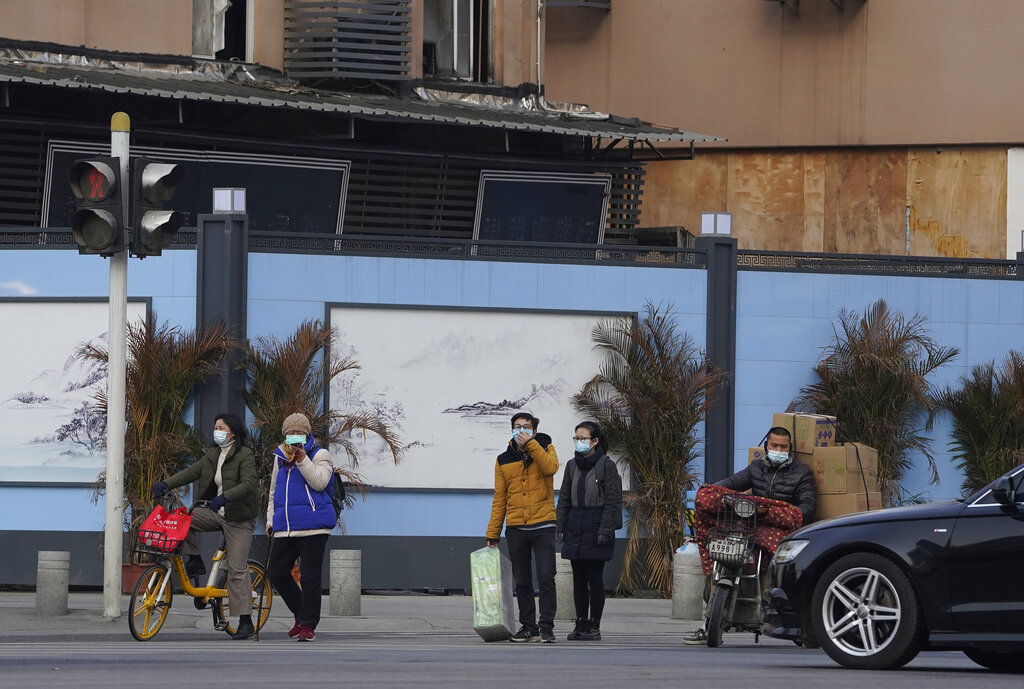ADF STAFF
With World Health Organization investigators finally on the ground seeking the origins of the COVID-19 pandemic, Chinese authorities have begun ramping up their own COVID-19 “infodemic” –– pumping out previously debunked theories about the disease while questioning the effectiveness of Western vaccines.
The stories have been echoed on state-owned media outlets worldwide.
“Its purpose is to shift the blame from mishandling by [the] Chinese government in the pandemic’s early days to conspiracy by the U.S.,” Fang Shimin, a science writer who tracks false scientific claims, told The Associated Press.
The WHO spent much of 2020 negotiating with Chinese officials over the parameters of the current investigation. Chinese leaders resisted an independent investigation for months. Even after they relented, they threw up a last-minute roadblock that delayed the team’s arrival in Wuhan by a week.
Two members were refused entry after testing positive for COVID-19 antibodies while in transit. The rest of the international team of a dozen investigators arrived January 14 in Wuhan, the central Chinese city where the first cases of COVID-19 appeared in late 2019. They spent the first two weeks under quarantine, working virtually with Chinese investigators.
After leaving quarantine, they have until the beginning of the Lunar New Year on February 12 to conduct their own field work. It’s unclear what they will find in the wet market that has been identified as the likely epicenter of the pandemic. Chinese authorities closed and sterilized the market shortly after the outbreak began.
A U.S. State Department report released in mid-January suggested the virus may have escaped from the Wuhan Institute of Virology when workers there became infected, echoing a similar event that happened with the SARS virus in 2004. Chinese authorities have denied that.
In a report released January 18, the Independent Panel for Pandemic Preparedness, co-chaired by former Liberian President Ellen Johnson Sirleaf and former New Zealand Prime Minister Helen Clark, criticized the WHO, the Chinese government and the international pandemic response in general as being too slow to meet the COVID-19 challenge.
The COVID-19 pandemic must be a catalyst for “fundamental and systemic change in preparedness for future such events,” according to the report.
Chinese leaders continue to try to shift blame for the outbreak away from Wuhan and their own documented delays in reporting the virus to the WHO. Chinese media and social media are promoting repeatedly debunked theories, such as the idea that the virus was created by the United States. Experts who have studied the virus say there’s no indication that the virus is manmade.
From quarantine, British-American zoologist and parasitologist Peter Daszak has posted several items supporting the prevailing hypothesis that COVID-19 originated in bats. Some of his posts have been in response to misinformation claiming otherwise.
Meanwhile, China has begun using state media to downplay the effectiveness of the Pfizer vaccine, which has become the primary vaccine deployed against the COVID-19 virus.
Pfizer’s vaccine has a 95% effectiveness rate against the virus. A Brazilian study found that China’s own vaccine, which the government claims has a 78% effectiveness rate, is just over 50% effective when factoring in mild cases.
Since the COVID-19 spread in early 2020, nearly 100 million people have contracted the virus worldwide and more than 2 million people have died.
“Every death is someone’s partner, someone’s child, someone’s friend,” WHO Director-General Dr. Tedros Adhanom Ghebreyesus said during the WHO’s weekly update on January 25.

